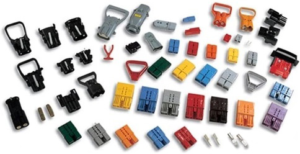2025 Europe and North America EV Charging Market Report
Executive Summary
The global transition to electric mobility is accelerating at divergent speeds across Europe and North America. Europe demonstrates coordinated policy ambition and rapid infrastructure deployment but faces grid constraints and regional fragmentation. North America benefits from Tesla’s technological leadership yet struggles with political volatility and delayed public investments. Both regions must overcome significant hurdles—grid modernization, standardization, and equitable access—to meet 2030 climate targets. This report analyzes key developments, infrastructure gaps, and strategic priorities shaping these critical EV charging markets.
1. European EV Charging Market
1.1 Market Size and Growth
Current Valuation: €108 billion (2024), projected to reach €1,449 billion by 2034 at a 29.3% CAGR.
Infrastructure Scale: 170,000+ public charging points across 25 countries, led by Spark Alliance members (Ionity, Fastned, Electra, Atlante).
EV Adoption: Norway leads with 77.6% EV penetration; Netherlands has highest charger density (10 chargers/1,000 people).
1.2 Policy Drivers
AFIR Regulations: Mandate fast-charging stations every 60 km along trans-European networks by 2025 (400 kW min power).
EPBD Directive: Requires EV-ready wiring in new buildings and promotes bidirectional charging.
Investment: €4.7 billion consortium investment to install 140,000+ chargers by 2027.
1.3 Technological Shifts
Ultra-Fast Charging: 350 kW+ stations expanding, targeting highways and urban hubs .
Renewable Integration: Solar-powered hubs emerging in Netherlands/Germany; AI-driven load management to reduce grid strain.
User Behavior: 70% plan charging before trips; 58% prefer branded stations.
1.4 Regional Disparities
North-South Divide: DC fast-charger growth exceeds 300% in Malta/Lithuania vs. 18% EU average.
Cost Variability: Charging costs range from €50 (Norway) to €7.70 (Iceland) per session.
Table: European Charging Infrastructure Snapshot (2025)
| Country | Public Chargers | Key Policies | 2030 Targets |
|---|---|---|---|
| Germany | 18,000+ | National Charging Plan | 1 million chargers |
| France | 9,500+ | Smart charger mandate | 40,000 ultra-fast |
| Netherlands | Highest density EU | Solar charging hubs | Full interoperability |
| Norway | 77.6% EV share | Zero-emission mandate | 100% ZEV sales |

2. North American EV Charging Market
2.1 Infrastructure Progress and Delays
Public Chargers: ~219,000 ports operational, but federal program built only 384 ports with $7.5B funding (0.2% of target).
State Initiatives: California hosts world’s largest Tesla Supercharger (168 stalls, 11 MW solar).
Fleet Electrification: Hallcon’s Washington EV hub (60 ports, 5 MW) to charge 300+ buses daily.
2.2 Policy Volatility
Funding Freeze: Trump administration paused $3B state grants and canceled 32 federal charging projects.
Tax Credit Sunset: $7,500 EV tax credit expires September 30, 2025.
2.3 NACS Dominance
Tesla’s Network: 23,500+ Superchargers now accessible to Honda/Acura (via $220 adapters) and Lucid.
Lucid’s Limitation: Adapter use caps Air sedan charging at 50 kW vs. native 300 kW capability.
2.4 Market Growth
BEV Sales: 1.8 million units sold in 2024; 11.5% CAGR projected through 2034.
Infrastructure Targets: 500,000 public chargers by 2030 under NEVI program.
Table: North American Charging Network Comparison
| Network | Key Players | Coverage | Tech Focus |
|---|---|---|---|
| Tesla Supercharger | Tesla, Honda, Lucid | 23,500+ stations | V4 (500 kW), solar |
| Federal NEVI | State agencies | 68 stations built | CCS/CHAdeMO stalled |
| Fleet Operators | Hallcon, PSE | Megawatt-scale hubs | 24/7 fleet charging |
3. Charts and Data Visualization
Figure 1: EV Charging Market Growth Forecast (€ Billion)
Europe vs. North America (2024–2034) | Year | Europe | North America | |------|--------|---------------| | 2024 | 108 | 110 | | 2027 | 280 | 165 | | 2030 | 720 | 260 | | 2034 | 1,449 | 420 |
(Note: North America includes US/Canada infrastructure investments)
Figure 2: Charger Type Distribution in Europe (2025)
Fast Chargers (50–149 kW): 41%
Ultra-Fast Chargers (150–350 kW): 32%
Slow Chargers (<22 kW): 27%
4. Key Challenges and Innovations
4.1 Europe
Grid Bottlenecks: 2–5-year delays for grid connections in some countries.
Interoperability: Spark Alliance enables cross-network access via single app.
Renewable Integration: Solar charging hubs reduce grid dependence.
4.2 North America
Political Uncertainty: Federal-state litigation over withheld funds.
Fleet-First Strategy: Hallcon’s 1.5 MW backup power ensures 24/7 uptime.
Adapter Ecosystem: NACS standardization accelerates but limits non-Tesla speeds.
5. Strategic Outlook
Europe: Requires 3.5 million chargers by 2030; current pace needs 25% acceleration. Ultra-fast corridors and V2G adoption will be critical.
North America: Must resolve funding bureaucracy to unlock $7.5B in stranded capital. Fleet electrification and Tesla’s open network are near-term bright spots.
Cross-Learning: Europe’s Spark Alliance offers a model for network integration, while North America’s solar-powered megasites demonstrate off-grid resilience.
Report Sources: GM Insights (2025), European Commission AFIR/EPBD, GAO (2025), Hallcon/Puget Sound Energy, Tesla Supercharger Network Data.



